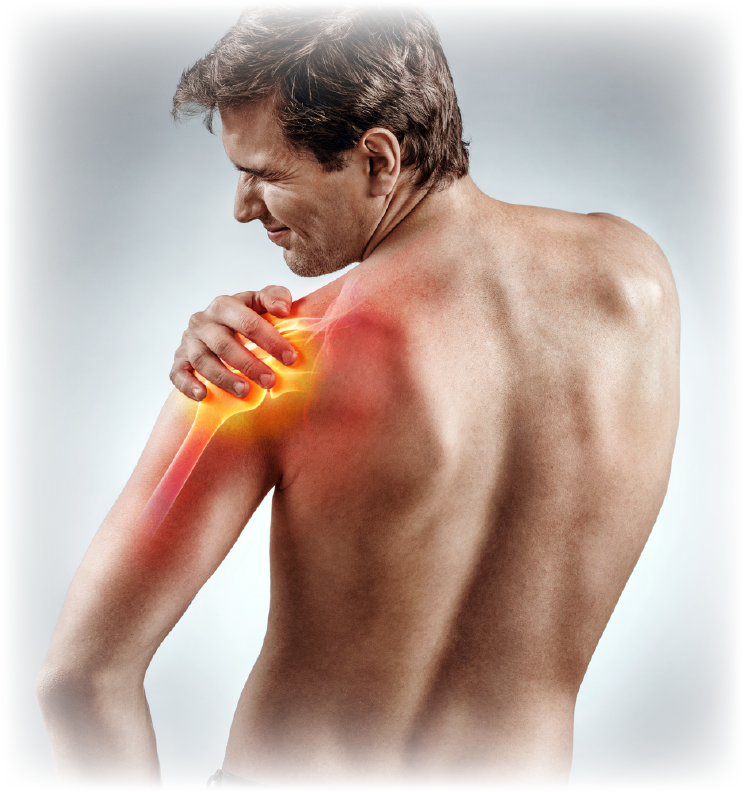Shoulder Pain - A common urban condition that affects you and me
Shoulder Pain: Causes, symptoms and treatments
reviewed by Dr Kelvin Tam
Last updated: 1st April 2022
Overview
 |
A good shoulder provides wide range of mobility in the arm, ranging from scratching your back to swinging at golf. With such a wide variety of movements, naturally, the chance things goes wrong on your shoulder increased as well.
Shoulder pain is a very common urban disease. It happens to almost everybody at different age. If you have experienced shoulder pain before, you should know how frustrating and inconvenient it could be. Sometimes you may feel the pain only when you move your shoulder, or sometimes, the pain persist all the time. This article explains some of the common causes shoulder pain, the diagnosis and treatment options.
Shoulder Pain Causes
The causes of shoulder pain usually fall into the followings:
- Shoulder Instability /Dislocation
- Shoulder fracture: commonly involve the clavicle (collarbone), humerus and scapula fracture. This causes severe pain.
- Shoulder arthritis: The most common type is osteoarthritis.
- Frozen Shoulder
- Shoulder impingement
- Inflammation of tendon (Tendinitis): this usually happen after excessive repeated overhead activities or degenerative condition of tear and tear due to age.
Bursitis, the inflammation and swelling of the bursa between rotator cuff shoulder blade, and this is often occurs in association with rotator cuff tendinitis.
Tendon tear: e.g.: rotator cuff tear
Referred pain: Sometimes there is no problem with your shoulder at all. The pain is actually a sign of something wrong
Pinched nerve in the neck or shoulder
Shoulder Pain Diagnosis
- Medical History - As a shoulder pain might have different underlying reason, a doctor will usually assess your medical history to ask the patient about how and when it started, is it a repeated symptoms happened before, and if treated, what was the treatment plan. Since a lot of times, a shoulder problem usually is aggravated by specific movements, and can be relieved by specific activities, a thoroughly medical history is valuable to assess the patient condition. By knowing how it affects the activities of daily living it’s valuable in guiding our treatment plans.
- Physical Examination - Further, the doctor will perform some physical examination. They will try to feel for tenderness and swelling, sometimes a doctor will also try to assess your range of motion and joint stability. One of the most important examination will be testing the patient ‘s strength which really helps when looking into possibilities of a rotator cuff tear.
- Imaging test - Further, to pin-point the problem, doctors might also order imaging tests such as Xray, CT or MRI.
- X-rays- These will able to show any injuries to the bones as well as looking for any signs of calcific tendinitis of the patient shoulder joint.
- CT to look at the configuration of a fracture or the overall shape of the bone, usually for a better planning for surgery
- MRI – provide a better picture for soft tissue injuries such as ligament and tendon injuries
- Electrical studies- EMG are sometimes ordered if there is a suspicion over damage of nerve function
When to seek medical help for shoulder pain
Usually recommend that after weeks of home treatment and resting, if the symptoms and pain doesn't reside, it is time to seek a professional help.
Or any time when you feel sudden increased in sharp pain.
Treatment Options for should pain
The treatment for shoulder pain depends on the findings of the underlying reason. However, usually involves:
- Activities changes
- Physiotherapy
- Shoulder immobilizer
- Oral medication such as paracetamol or NSAID
- Injected Medication such as corticosteroids to ease the pain
If the above non-invasive treatment doesn't produce a positive result, or based on the current indication, surgery would be an option that a doctor would recommend. The two main types of shoulder surgeries such as:
- Arthroscopy: a minimally invasive procedure to remove scar tissue or repair torn tissues
- Traditional Open procedures: for large reconstruction and replacement.
